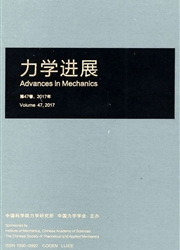

 中文摘要:
中文摘要:
采用非线性Winkler地基梁模型分析侧向液化土-桩相互作用所面临的首要难题是液化土p-y曲线的确定.因此较全面地阐述了液化土p-y曲线模型的国内外研究历史、现状与重要成果,对获得液化土p-y曲线不同试验手段的典型试验作一简明分析,并概括了桩基侧向响应分析中常用的液化土p-y曲线.液化土p-y曲线的模型研究国外已取得不少很有价值的科研成果并开始用于桩基设计中,而国内才刚刚起步且以试验研究为主,基于这个事实,提出了对曲线模型研究的若干建议与认识,为曲线模型研究提供一些技术思路.液化土p-y曲线模型研究水平的提升将推动我国发展基于变形的液化场地桩基桥梁抗震设计方法.
 英文摘要:
英文摘要:
The most difficult step in analyzing soil-pile interaction in liquefied ground by using the Beam on Nonlinear Winkler Foundation(BNWF) method is how to determine p-y curves for liquefied soil,and consequently many attempts have been made for investigating p-y curves of the liquefying soil.The history,current situation and valuable achievements of the p-y curve model for liquefying soil are comprehensively expounded,some typical tests for studying p-y curves are reviewed and those p-y curves are briefly summarized that were often used to analyze the lateral response of pile foundations on liquefied grounds.Finally,since a lot of valuable achievements in p-y curve model have been made and put into practice in the overseas design of pile foundations on liquefiable grounds whereas the domestic research is still at the start with focuses laid on experiments,some thoughts and understandings on the p-y curves are put forward in this review to elucidate effective technical approaches.The promotion of researches on the p-y curve model has theoretical and practical significance for developing displacement-based methods of seismic design for pile-supported bridges in China.
 同期刊论文项目
同期刊论文项目
 同项目期刊论文
同项目期刊论文
 3D FEM Numerical Simulation Of Seismic Pile-supported Bridge Structure Reaction in Liquefying Ground
3D FEM Numerical Simulation Of Seismic Pile-supported Bridge Structure Reaction in Liquefying Ground Study on Dynamic Behavior for Pile-Soil-Bridge Structure Seismic Interaction in Liquefying Ground un
Study on Dynamic Behavior for Pile-Soil-Bridge Structure Seismic Interaction in Liquefying Ground un 期刊信息
期刊信息
